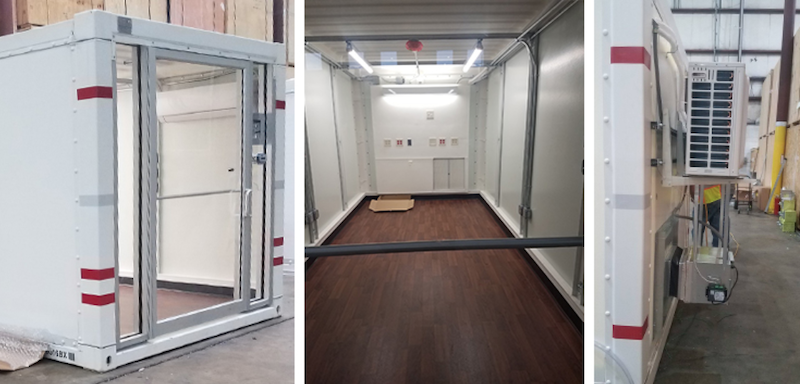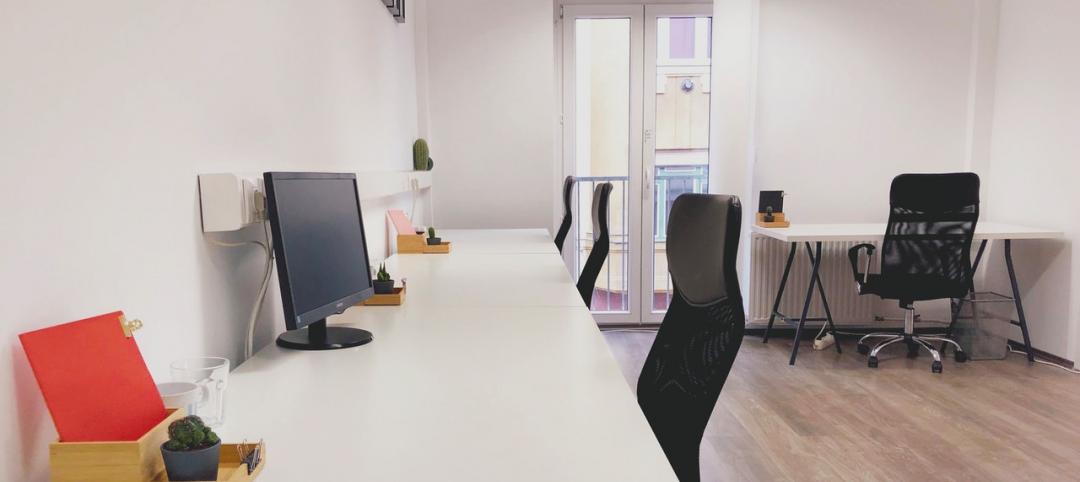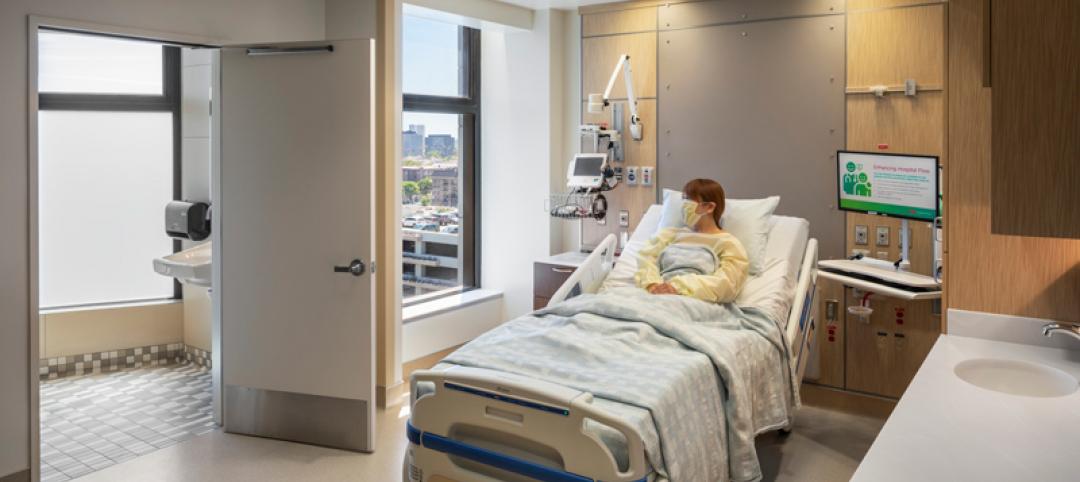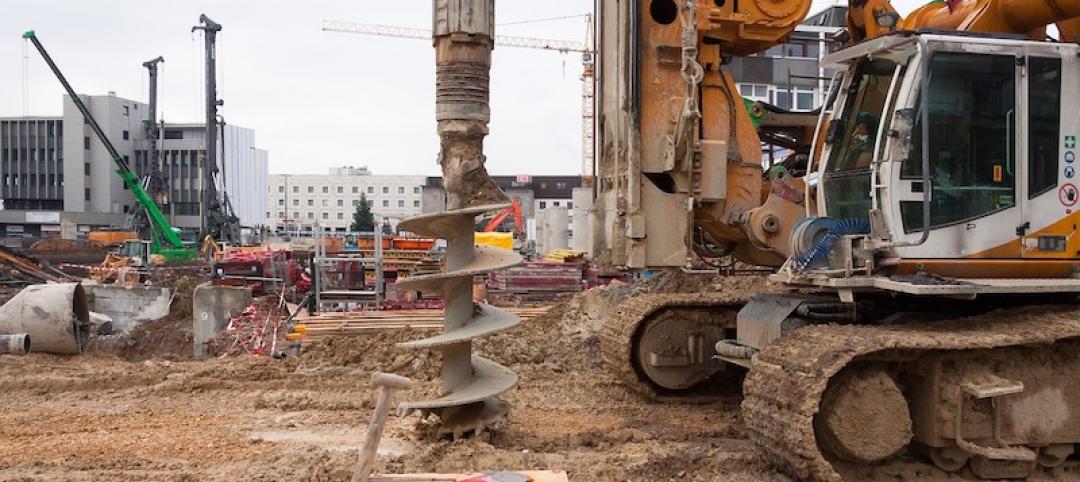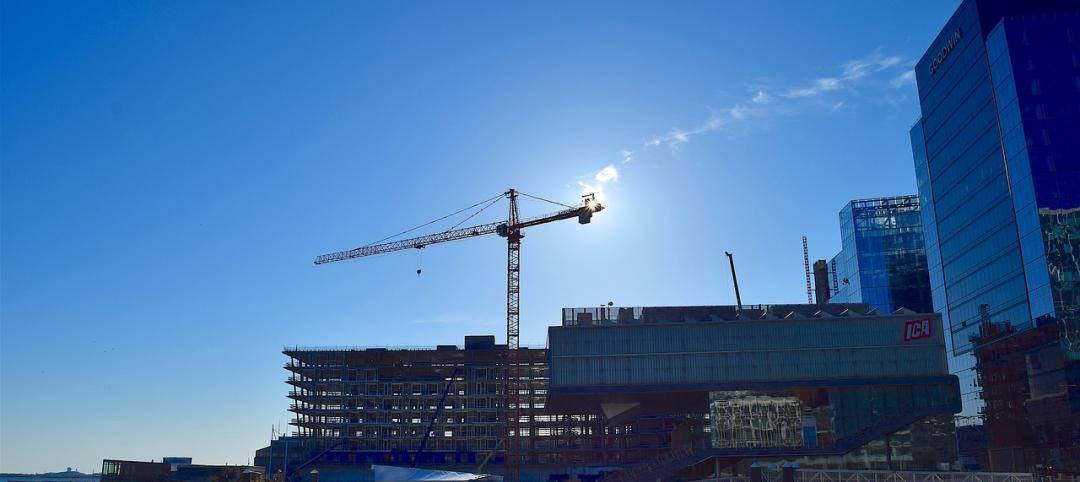CallisonRTKL worked with the facilities and infrastructure firm Patriot in a collaborative process on a design-build project for the U.S. Army Corps of Engineers. This project uses PODS to develop containers that can be repurposed into isolation units for alternative healthcare facilities treating coronavirus-positive patients.
Modifications to existing PODS containers were made to be used as a rapid response airborne infection isolation room (AIIR) and designed to enhance Healthcare Personnel (HCP) protection during care of infectious patients. Some of the design features implemented to limit HCP exposure:
- Isolation: Patients are isolated in an enclosed space, limiting to HCPs outside of the immediate patient care space.
- Transparency: The front wall of the container is designed with a full-glass door and sidelights to provide maximum patient visibility.
- Sanitation: Seamless flooring with cove base is installed to facilitate proper housekeeping and surface disinfection.
- Lighting: Multiple levels of lighting within the container haS been provided for patient comfort. Overbed lighting is provided for routine daytime settings with supplemental ceiling-mounted exam lighting and wall-mounted night lights.
- HVAC: HVAC systems are designed to provide horizontal air flow, introducing air from the front of the container and discharging air directly behind the patient at the rear of the container.
- Ease of Installation: Each container has individual electrical panels and condenser units mounted to the back of the container to simplify installation and commissioning of units within an alternate care site.
USACE APPROVED CONVERSION OF PODS CONTAINERS INTO SELF-CONTAINED ROOMS FOR COVID-19 PATIENTS
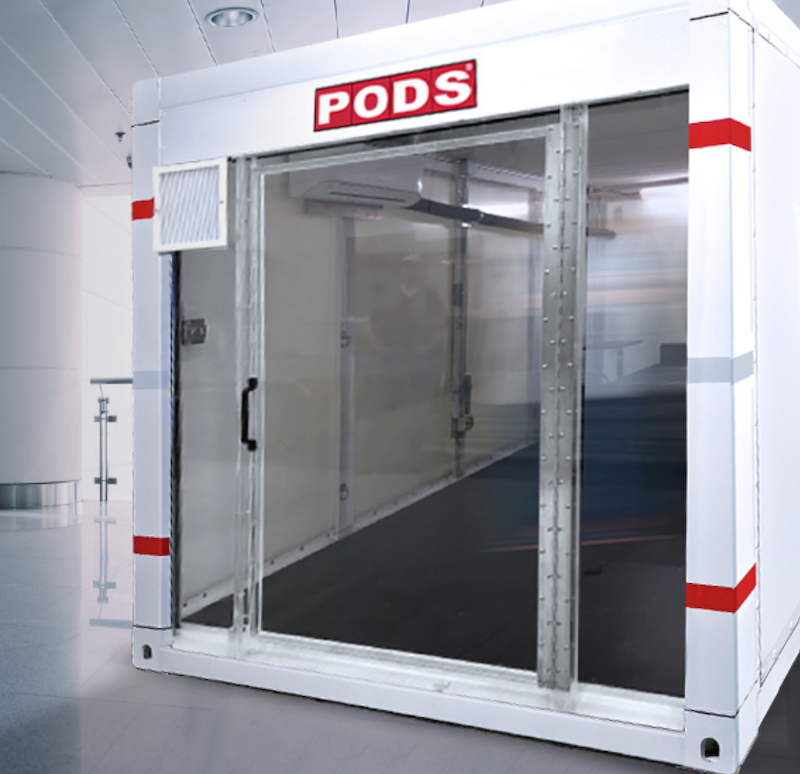
According to PODS, USACE developed, tested, and approved the conversion of PODS 12-foot and 16-foot containers into self-contained rooms with hospital beds that can be used for COVID-19 positive patients.
- Washable walls and floor cover per CDC guidelines
- Emergency back-up power
- Electrical and data outlets
- Exhaust fan with HEPA filtering
- Louver with gravity damper and balancing damper
- Modified isolation room entry door with direct line-of-sight visibility of patient
Related Stories
Coronavirus | Mar 20, 2020
AIA implores Congress to provide relief to business owners and employees
The American Institute of Architects (AIA) 2020 President Jane Frederick, FAIA, and EVP/Chief Executive Officer Robert Ivy, FAIA, are urging Congress to address the critical needs of business owners and employees during the COVID-19 pandemic.
Coronavirus | Mar 20, 2020
Extending care capacity as COVID-19 grows
Coronavirus threatens to overwhelm the U.S. healthcare system. LEO A DALY’s health practice leader offers some innovative ideas for expanding access.
Coronavirus | Mar 19, 2020
Positive vibes: Let's take a look at the brighter side of these crazy times
Perhaps now is a good time to take a page from Monty Python's book and look on the bright side of life. So let's push aside the doom and gloom for a bit and bring a little positivity to these strange times we all currently find ourselves in.
Coronavirus | Mar 19, 2020
Force Majeure and COVID-19 in construction contracts - What you need to know
With the onset of the COVID-19 pandemic, we are all taking a closer look at many portions of our contracts.
Coronavirus | Mar 19, 2020
Technology crucial during COVID-19 social distancing
Technology can help bridge the gap during the Coronavirus pandemic as higher education institutes and corporations are moving to a remote work model.
Coronavirus | Mar 18, 2020
Coronavirus latest: Short-term pain but strong rebound likely, says Oxford Economics
Once the disruption and uncertainty fade, the rebound in global economic activity will be strong. It’s important for firms to position themselves for such a recovery.
Coronavirus | Mar 18, 2020
We are in the midst of a paradigm shift for higher education
The question for higher education is, what will the university of the future look like?
Coronavirus | Mar 17, 2020
AIA: Design services saw increase in February, but economic footings are rapidly shifting
"The rapid pull-back in activity throughout the economy will obviously be felt in the design and construction sector, and architecture firms will be one of the first to see how these events play out,” said AIA Chief Economist, Kermit Baker, Hon. AIA, PhD.
Coronavirus | Mar 17, 2020
AGC to government officials: Shutting down construction projects is an unnecessary step
Construction firms are already taking steps to protect employees, most of whom already wear protective equipment, while halting work will undermine efforts to add hospital capacity.
Coronavirus | Mar 16, 2020
Boston mayor orders shut down of construction sites due to coronavirus
Boston Mayor Martin Walsh has ordered that all construction projects in the city be suspended in response to the spread of the coronavirus.


